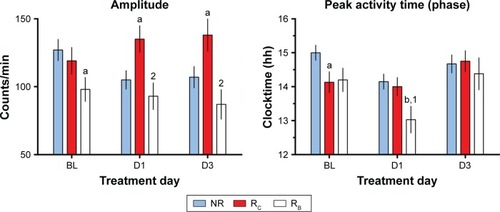Figures & data
Table 1 Baseline circadian markers of wrist activity in brief (RB) vs continued (RC) ketamine responder and nonresponder (NR) groups
Figure 1 Baseline and ketamine treatment 24-hour motor activity markers of rapid mood response.
Abbreviation: NS, not significant.

Figure 2 Baseline (BL), day 1 (D1), and day 3 (D3) Montgomery–Åsberg Depression Rating Scale (MADRS) score.

Table S1 Demographics of brief responder (RB) versus continued responder (RC) and nonresponder (NR) cohorts
